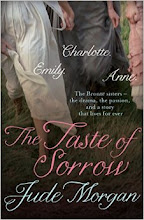When I was little, I had a book called
Fairytales from around the World. The only one I can still clearly remember was about a childless couple who build a snow girl, and the girl comes to life and is a daughter to them. I
think she fell in love, though with whom I do not know, and I know she melted at the end when she jumped over a bonfire. I am fairly sure she was called Snowflake in this version, and the story itself may well have been eponymous.
The only other thing I recall about it was the main illustration, which, in my head at least, was by Janet and Anne Grahame Johnstone, and was exquisite.
When I discovered, a mere few weeks ago, that a new young author had written a novel based on this Russian fairytale, and that this book apparently created a living winter landscape in which to place the snow girl, I knew I had to read it.
Eowyn Ivey has, sensibly, moved the setting of her story to the Alaska she knows so well, and sets it in the 1920s, when the railroad was just beginning to creep across the American wilderness, but when most frontier areas were still isolated and people depended very much on the land for survival.
The Snow Child is beautifully written ("Words lay like granite boulders in her lap and when at last she spoke, each one was heavy and burdensome and all she could manage.") and is undoubtedly a novel of place. As with
Wuthering Heights or Susan Fletcher's
Corrag (its name changed in paperback first to the somewhat embarrassing
Witch Light and then to the even worse
The Highland Witch), the environment is as much a character as are the people.
The Snow Child is wild and cold and lonely; the plot is sparse and padded with great snowdrifts of description which never feel overwrought, but which create a sense of calm and silence, just as snowfall itself does. I read it with the narrative voice of Jennifer Lawrence in
Winter's Bone rattling through my head, though in terms of accent I know that's deeply inaccurate.
My only criticism would be that I did not become as emotionally involved as I was expecting or would have liked. The characters are all well-drawn and likeable, but I never felt any strong connection to them. This may be because spring is in the air, and this is a winter story - perhaps I would have invested more had I been glancing up at my window expecting to see snow. It is, however, a beautifully bound and presented book (in hardback at least) and I was proud to be seen in public reading it.
I loved the clever use of punctuation - or rather, the clever absence of it - when Faina speaks; there are no speechmarks, so that her words blend into the description and she seems physically, on the page, to be a part of the landscape to which she belongs. It is also possible that I have learned how to gut a fish - maybe even a swan - from this earthy novel!
In summary - as a first novel, it is certainly an accomplishment, and though it perhaps lacks a certain weight, I
would recommend it as a snuggly bedtime book. With animal innards.


